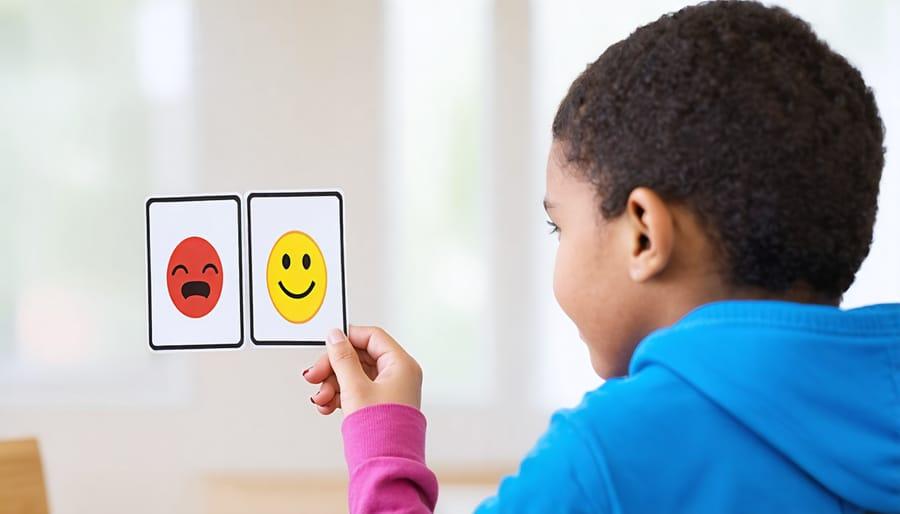Empowering Success: Essential SEL Strategies for Students with special Needs
Social-Emotional Learning (SEL) is a transformative approach that helps all students, and it is indeed especially vital for students with special needs. In today’s diverse classrooms, empowering success for learners with unique challenges means adopting SEL strategies that foster social skills, emotional resilience, and academic achievement. In this article,we explore essential SEL strategies for students with special needs,offer practical tips for teachers and parents,and share real-world examples of success.
Understanding SEL and Its Importance for Students with Special Needs
SEL is a process by which children and adults develop the skills needed to understand and manage emotions, set goals, establish positive relationships, and make responsible decisions. For students with special needs — including those with autism,ADHD,learning disabilities,and emotional or behavioral disorders — SEL is a crucial bridge that connects academic learning with lifelong success.
- Emotional regulation: SEL helps students recognize and manage thier feelings, reducing anxiety and frustration.
- Social Skills: enables positive peer interactions and improves communication skills.
- Self-Advocacy: Equips students to express their needs and concerns effectively.
- Academic Performance: When students feel emotionally supported, they are better able to focus and succeed academically.
Core SEL Competencies for students with Special Needs
Research-based frameworks, like CASEL’s five core competencies, provide a foundation for effective SEL strategies for students with special needs:
- Self-awareness: Understanding one’s own emotions, strengths, and areas requiring support.
- Self-management: Managing emotions and behaviors to achieve personal goals.
- Social awareness: Demonstrating empathy, respecting diversity, and understanding social cues.
- Relationship skills: Forming and maintaining positive relationships, including skills like active listening and conflict resolution.
- Responsible decision-making: Making ethical, constructive choices about personal and social behavior.
Top SEL strategies for Students with Special Needs
1. Incorporating visual Supports and Social Stories
visual supports, such as charts, emotion thermometers, and visual schedules, help clarify expectations and routines. Social stories narrate common social scenarios, guiding students on how to behave and react appropriately.
- Use pictorial guides for classroom procedures.
- Create personalized social stories for challenging social situations.
2. Explicit Instruction of Emotional Vocabulary
Teaching students to identify and articulate their emotions enhances emotional literacy. Use emotion charts, picture cards, and role-play activities to introduce new words and scenarios.
3. Scaffolded Peer Interaction
Facilitating structured activities with peers encourages positive social interaction and cooperation. Examples include cooperative games, buddy systems, and turn-taking exercises.
4.Mindfulness and Self-Calming Techniques
Mindfulness exercises help students manage stress and anxiety. Breathing techniques, guided visualizations, and calm-down corners within the classroom support self-regulation.
5. Collaborative Goal-Setting and Reflection
Involve students in setting achievable SEL goals, tracking progress, and reflecting on growth. Use simple journals or progress charts to make this process accessible and meaningful.
6. Family and Community Engagement
Collaborate with families to reinforce SEL skills at home. Share resources, practical tips, and consistent communication strategies between school and home environments.
Benefits of SEL Strategies for Special Needs Learners
- Improved Behavior: SEL reduces disruptive incidents and improves classroom climate.
- Stronger Relationships: Students develop better connections with peers and teachers.
- Greater Independence: Enhanced self-regulation leads to increased autonomy.
- Long-Term Success: SEL skills prepare students for transitions to higher education, employment, and autonomous living.
“Implementing SEL in our inclusive classroom has transformed student engagement and created a positive, supportive culture where every child thrives.”
— ms. Brittany Edwards, Special Education Teacher
Practical Tips for Teachers and parents
- Integrate SEL into Daily Routines: Embed SEL lessons into morning meetings, transitions, and subject lessons.
- Model Emotional Intelligence: Demonstrate healthy emotional expression and problem-solving strategies.
- Differentiate for Individual Needs: Remember, one approach doesn’t fit all. Adapt strategies for nonverbal students, sensory processing needs, and other challenges.
- Celebrate Progress, Not Perfection: focus on small wins and incremental growth to build confidence.
- Engage in Ongoing Professional Progress: Stay updated with the latest SEL resources, research, and best practices.
Case Study: Real-world SEL Success in a Special Education Environment
At Lincoln Elementary, the special education team implemented a comprehensive SEL program for students with autism and ADHD. Using a combination of visual routines, daily mindfulness sessions, and weekly peer-buddy activities, the team observed:
- Reduced incidents of classroom meltdowns by 30%.
- Increased peer interactions during recess and group activities.
- Improved IEP goal achievement in social skills and emotional regulation.
One parent noted, “Since SEL was introduced, my daughter has become more self-aware and is better equipped to handle changes at school and home.”
SEL Resources and Tools for Students with Special Needs
- Zones of Regulation: A curriculum to help students identify and manage feelings.
- Second Step for Special Education: SEL lessons tailored for diverse learners.
- Apps such as Calm Kids and social Express: Digital tools for practicing mindfulness and social problem-solving.
- Personalized Social Stories Apps: Create custom stories for home and school situations.
First-hand Experience: Teacher Perspective
“Implementing SEL strategies with my diverse group of learners has been a rewarding journey,” shares Ms.Anjali Singh, a special education teacher. “It required patience, creativity, and a willingness to learn from my students. By celebrating every milestone, fostering open communication, and staying consistent, I’ve witnessed tremendous growth — not just academically, but in their self-confidence and emotional resilience.”
Conclusion: Building Lifelong Skills Through SEL
Empowering success for students with special needs is possible through effective, individualized, and compassionate SEL strategies. Fostering emotional intelligence and resilience not only enhances academic performance but also prepares students for meaningful social participation and independence. By embracing SEL,educators and families can make a lasting,positive difference in the lives of children with special needs.
Start implementing these essential SEL strategies for special needs students today,and watch your students blossom into confident,capable learners ready to thrive in and beyond the classroom.

